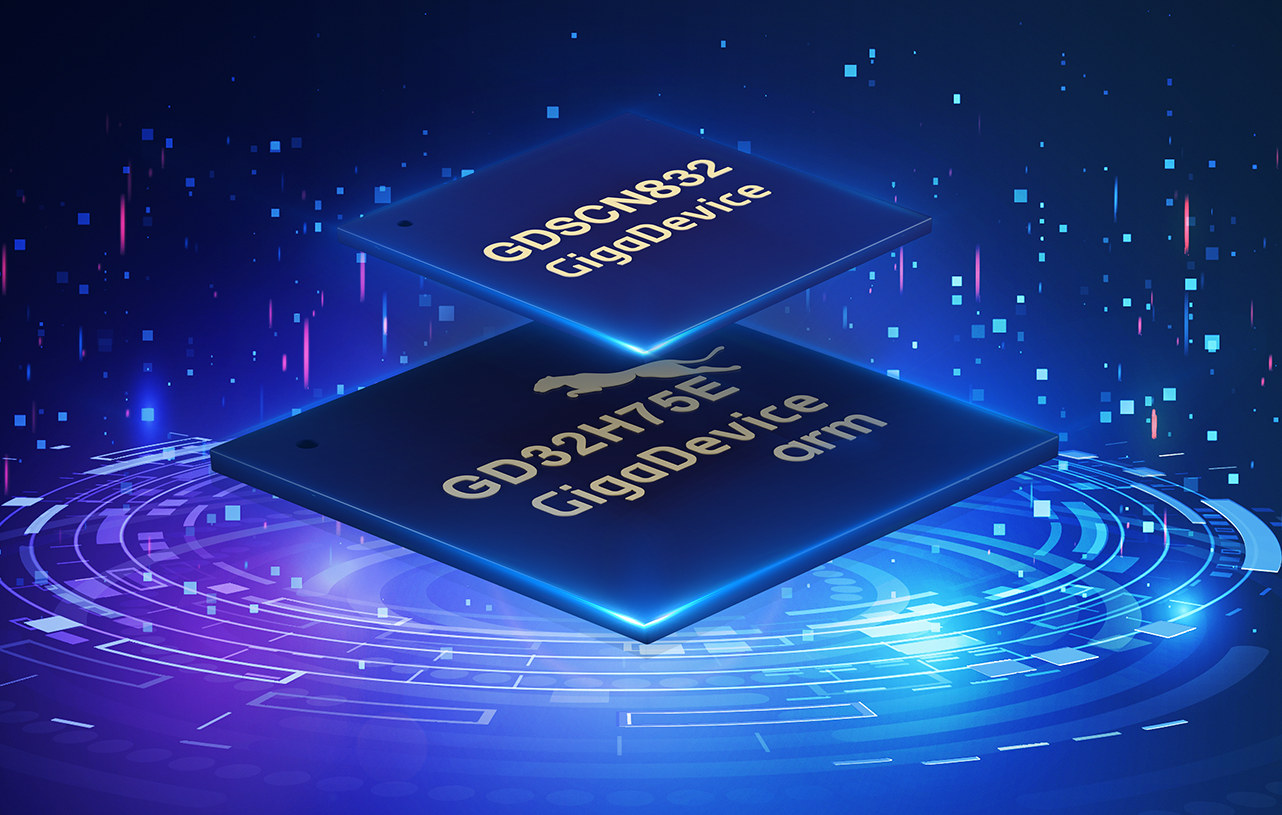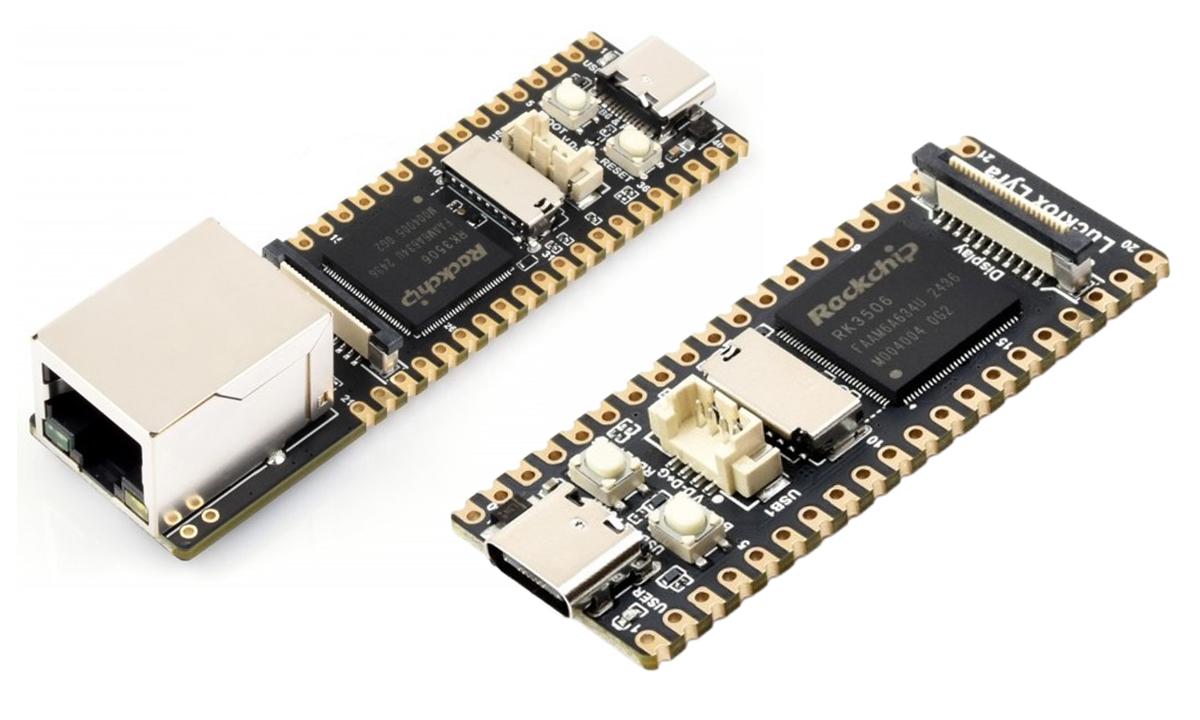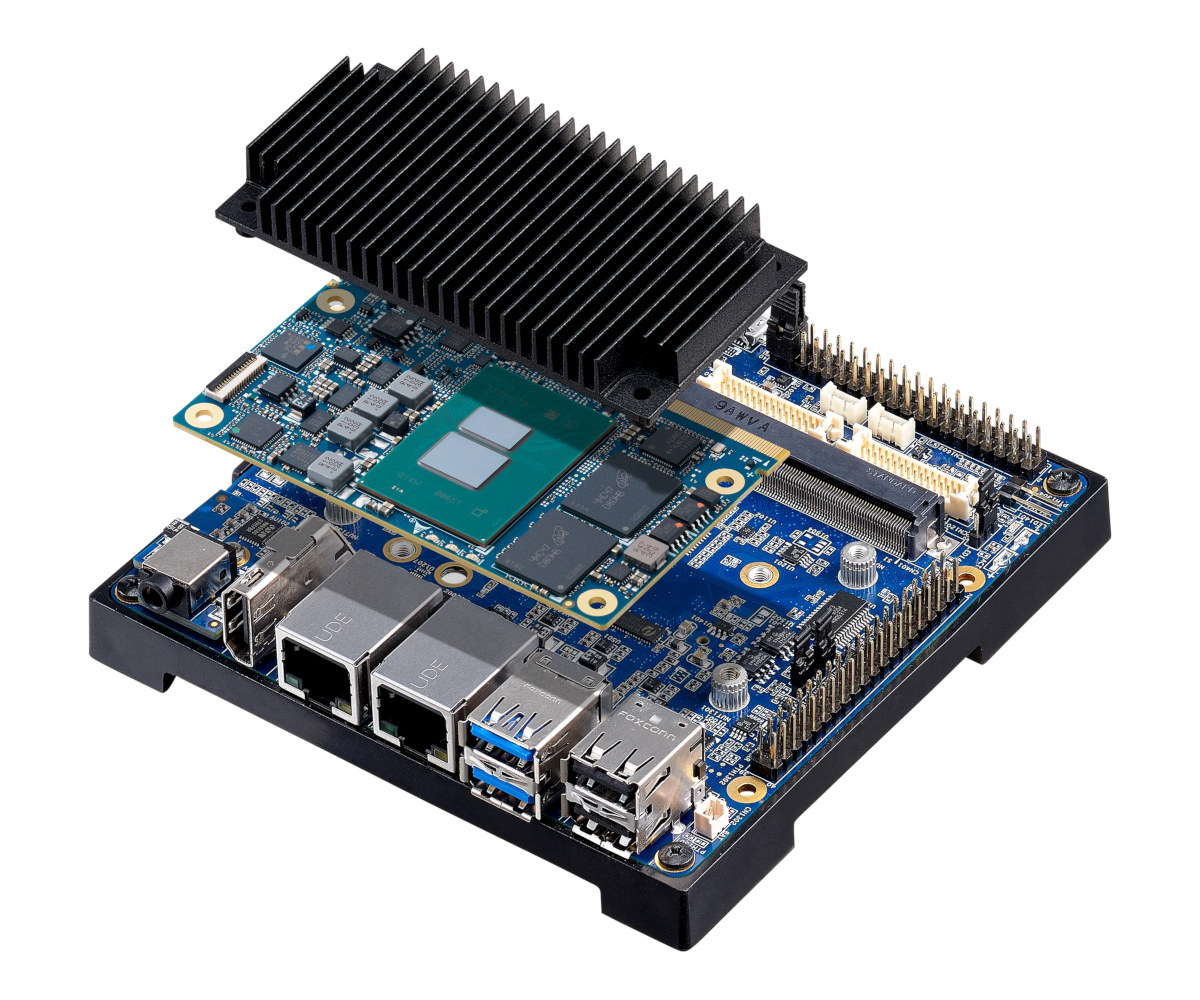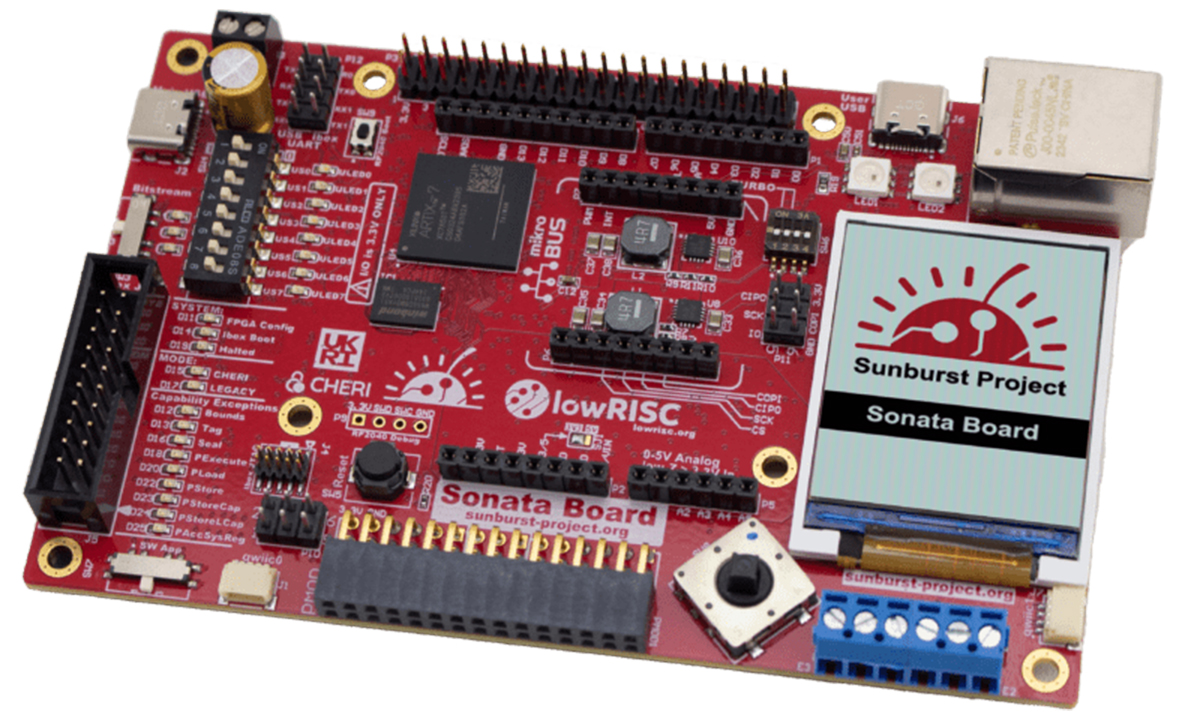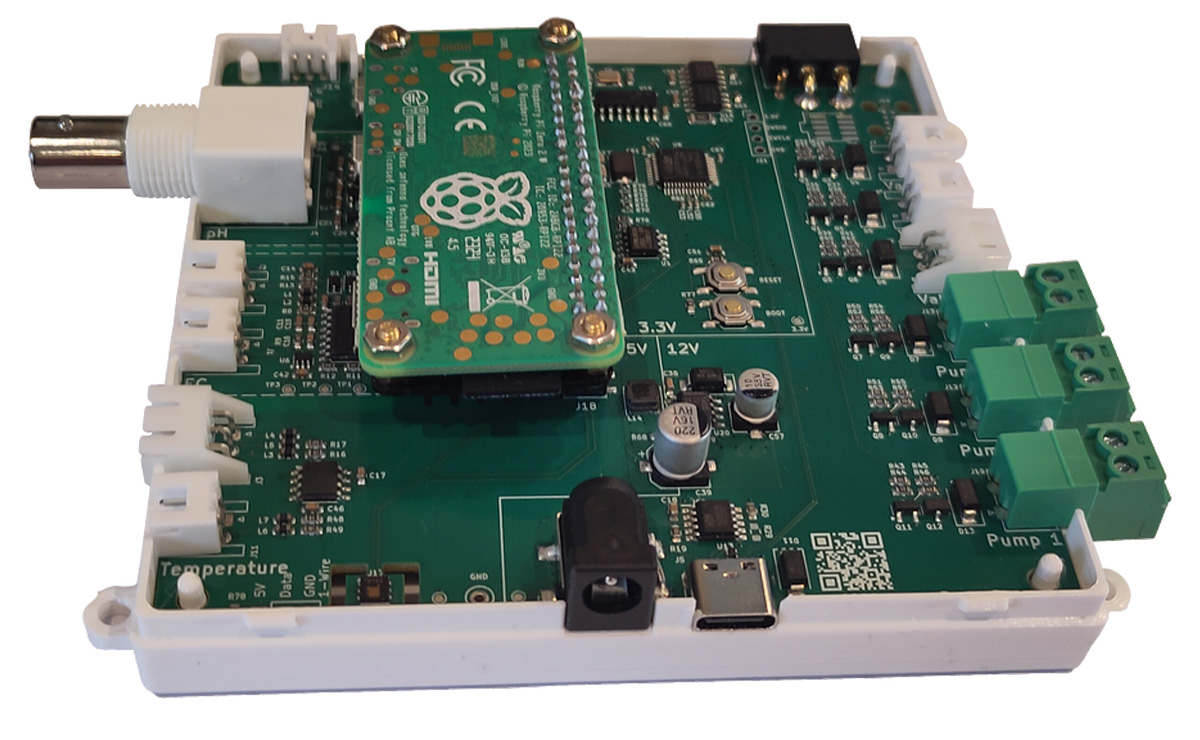GigaDevice has launched its first EtherCAT SubDevice Controller with the GDSCN832 along with the 600 MHz GD32H75E Arm Cortex-M7 microcontroller series which incorporates the EtherCAT SubDevice Controller. The GH32G57E microcontroller also comes with 1024KB SRAM, 3840 KB flash with protection, up to two Ethernet PHY, USB Full Speed and High-Speed interfaces, and a range of peripherals and timers. Both products are made for the industrial automation market and are suitable for servo control, variable frequency drives, industrial PLCs, and communication modules. Gigadevice GD32H75E specifications: CPU – Arm Cortex-M7 32-bit processor core operating at 600 MHz frequency Memory and Storage 512KB AXI SRAM 512KB RAM shared (ITCM/DTCM/AXI) memory 3840 KB on-chip Flash memory with security protection to prevent illegal code/data access External memory controller (EXMC) for SRAM, PSRAM, ROM, and NOR Flash Accelerator – Filter arithmetic accelerator (FAC) and Trigonometric Math Unit (TMU) Industrial communication 2x Ethernet PHYs (YMJ6 parts only) […]
Luckfox Lyra boards feature Rockchip RK3506G2 triple-core SoC, display interface, optional Ethernet port
The Luckfox Lyra boards feature a Rockchip RK3506G2 triple-core Arm Cortex-A7 SoC with one Cortex-M0 real-time core, 128MB on-chip DDR3, a MIPI DSI display interface, and built on a 22nm process. Three versions are available with the Luckfox Lyra, Lyra B (with 256MB flash), and Luckfox Lyra Plus offering similar features, but the longer Plus model also adds a 10/100Mbps Ethernet RJ45 connector besides having 256MB SPI NAND flash. These are Luckfox’s first boards featuring the RK3506G2 processor, offering Ethernet connectivity and a display interface. But it’s not quite the first Arm Linux board from the company with Ethernet and a display interface, and we covered the Luckfox Pico Ultra micro development board all based on a Rockchip RV1106G3 SoC earlier this year. The company also introduced the similar-looking LuckFox Pico Pro and Pico Max boards powered by an RV1006G2 SoC in February, but instead of a display interface, they […]
I-Pi SMARC Amston Lake development kit features Intel Atom x7433RE SoC, 8GB LPDDR5, two Raspberry Pi GPIO headers
ADLINK’s I-Pi SMARC Amston Lake is a fanless development kit based on SMARC 2.1-compliant system-on-module with an Intel Atom X7433RE quad-core SoC, 8GB LPDRR5 memory, and up to 256GB eMMC flash, plus a carrier board with dual 2.5GbE with TSN, two Raspberry Pi-compatible GPIO headers, and a range of other interfaces. Those include 4-lane MIPI DSI, HDMI, eDP, and dual-channel LVDS display interfaces, two MIPI CSI camera interfaces, a 3.5mm audio jack, four USB Type-A ports, three PCIe M.2 sockets for storage, wireless, and cellular connectivity. I-Pi SMARC Amston Lake devkit specifications: LEC-ASL SMARC 2.1 module Amston Lake SoC – Intel Atom x7433RE quad-core processor with 6MB cache, 32EU Intel UHD graphics; 9W TDP System Memory – 8GB LPDDR5 Storage – 32GB to 256GB eMMC flash Host interface – 314-pin MXM edge connector Storage – 1x SATA III (6 Gbps) Display – Dual-channel 18-/24-bit LVDS Camera – 2-lane MIPI CSI, […]
Inky Frame 7.3″ is a 7-color ePaper display powered by a Raspberry Pi Pico 2 W
The Inky Frame 7.3″ is a Pico 2 W ePaper display featuring a 7.3-inch E Ink screen with 800 x 480 resolution and 7-color support. Other features include five LED-equipped buttons, two Qwiic/STEMMA QT connectors, a microSD card slot, and a battery connector with power-saving functionality. This Pico 2 W ePaper display is ideal for low-power applications such as home automation dashboards, sensor data visualization, and static image displays. E Ink technology ensures energy efficiency by consuming power only during screen refreshes while retaining images when unpowered. Flexible mounting options and included metal legs make it suitable for various setups. Previously, we covered the Waveshare 4-inch Spectra, a six-color ePaper display, along with other modules like the Inkycal v3, Inkplate 4, EnkPi, Inkplate 2, and more. Check them out if you’re interested in exploring these products. The Inky Frame 7.3″ specifications: Wireless module – Raspberry Pi Pico 2 W SoC […]
Synaptics SYN20708 low-power IoT SoC features Bluetooth, Zigbee, Thread, Matter, and advanced coexistence
Synaptics has recently introduced the SYN20708 low-power IoT SoC designed to handle simultaneous Bluetooth 5.4 Classic/Low Energy and IEEE 802.15.4 radios with Zigbee, Thread, and Matter protocols. The SoC integrates power and low-noise amplifiers and two separate radios enable simultaneous multiprotocol operations. The SoC is based on a 160 MHz Arm Cortex-M4 processor with user-accessible OTP memory for configuration. Built using a 16-nm FinFET process, it has very low power consumption, and advanced features like high-accuracy distance measurement (HADM), angle-of-arrival (AoA), and angle-of-departure (AoD). These features with versatile antenna support make this SoC suitable for industrial, consumer, and IoT applications. Synaptics SYN20708 specifications CPU – Arm Cortex-M4 processor @ 160 MHz Memory/Storage 544 KB System RAM 1664 KB Code RAM 1640 KB ROM 256 bytes OTP Connectivity Dual-radio Bluetooth 5.4 Bluetooth Classic, Bluetooth Low Energy Supports Bluetooth 6.0 features like HADM (high accuracy distance measurement) Bluetooth Class 1 and Class […]
Sonata v1.0 RISC-V platform combines AMD Artix-7 FPGA and Raspberry Pi RP2040 MCU, features CHERIoT technology for secure embedded systems
lowRISC has released Sonata v1.0, a stable platform developed under the Sunburst project. Designed for embedded systems engineers, Sonata supports CHERIoT technology, enabling features like compartmentalization and enhanced memory safety. It provides a reliable foundation for building secure embedded systems. CHERIoT is a security-focused technology built on lowRISC’s RISC-V Ibex core, based on CHERI research from the University of Cambridge and SRI International. It addresses memory safety issues like buffer overflows and use-after-free errors using CHERI’s capability-based architecture. The CHERIoT capability format includes permissions for memory access, object types for compartmentalization, and bounds to restrict accessible memory regions. These features enable scalable and efficient compartmentalization, making it suitable for securely running untrusted software in embedded systems. Sonata v1.0 leverages this architecture to isolate components like network stacks and kernels within the CHERIoT RTOS. The lowRISC Sonata v1.0 specifications: FPGA – AMD Xilinx Artix-7 (XC7A35T-1CSG324C) CPU – AMD MicroBlaze soft-core based on […]
RootMaster is a Raspberry Pi Zero 2W-based hydroponic automation system with STM32G4 MCU, CAN Bus, sensors
The RootMaster is a Raspberry Pi Zero 2W-based hydroponic automation system designed to precisely manage water and environmental conditions. The solution also integrates an STM32G4 microcontroller to handle real-time operations such as controlling pumps and peripherals, managing sensors, and processing data from external sensors like water level indicators. It also generates PWM signals to control the power of connected devices and handles communication with external modules through a CAN FD interface. While STM32 handles hardware-level tasks, the Raspberry Pi Zero 2W manages high-level control and user interaction. The RootMaster can be programmed with Python, C, C++, or other programming languages and is useful for applications like Hydroponics automation, water circulation, and environmental control. RootMaster specifications MCU – STMicro STM32G473 32-bit Arm Cortex-M4 microcontroller @ 170 MHz for real-time operations Main controller – Compatible with Raspberry Pi Zero 2 WH for GUI and other interfaces Sensors pH sensor for nutrient solution […]
MECOOL KM9PRO MAX 4K Streaming Box runs Google TV 12.0 on Realtek RTD1325 SoC
MECOOL KM9PRO MAX 4K is a Google TV 12.0 streaming box based on the Realtek RTD1325 quad-core Cortex-A55 SoC which we initially found in the Formuler Z Mini 4K Android 12 dongle. Since it’s a more traditional TV box as opposed to an HDMI dongle, it adds features like 10/100Mbps Ethernet, optical S/PDIF output, an AV composite and audio jack, two USB 2.0 ports, while keeping the 4K-capable HDMI 2.1 port and WiFi 5 and Bluetooth 5.0 connectivity. The KM9PRO Max 4K also comes with a larger 32GB eMMC flash. MECOOL KM9PRO MAX 4K specifications: SoC – Realtek RTD1325 CPU – Quad-core Arm Cortex-A55 @ 1.7GHz with 512KB L3 cache; 20,000 DMIPS GPU – Arm Mali-G57 MC1 with OpenGL ES 3.2 VPU – 4Kp60 10-bit AV1, VP9, H.265 video decoder System Memory – 2GB LPDDR4 Storage – 32GB eMMC flash Video & Audio Output HDMI 2.1 up to 4K resolution […]


